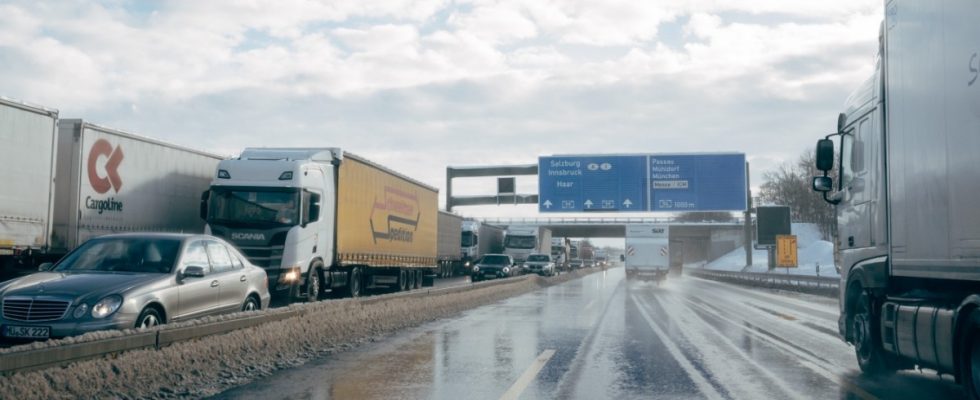Lightning ice caused several accidents on the eastern bypass of the A 99 on Tuesday night, the effects of which were felt well into the afternoon. The fire departments from Aschheim and Kirchheim were alerted at around 3:30 a.m. More than a dozen vehicles had collided in a pile-up at the Aschheim/Ismaning motorway exit heading north, and two people sustained minor injuries. As a result, several accidents also occurred in the southerly direction of travel. The highway had to be closed in both directions for several hours while the cleanup work took place. There were kilometers of traffic jams. The police therefore advised people to avoid the eastern bypass as much as possible.
The traffic disruptions continued throughout Tuesday afternoon. At times, road users had to accept an hour’s loss of time between the Munich-Allach motorway triangle and the Haar junction. In the opposite direction, from the Munich-South junction to the Kirchheim junction, only stop-and-go was at times possible.
On the third day after the massive onset of winter with snowfall of up to half a meter, local public transport in the Munich district was slow to get going again and was repeatedly slowed down by damage to the infrastructure. The S 8 to the airport was the first line to resume operations on Monday, with the S 1 to Freising and the S 2 to Erding also following on Monday afternoon. On Tuesday afternoon, however, a defective train again paralyzed operations on the S 1 line between Oberschleißheim and Munich-Moosach.
In the southern and eastern district of Munich, the S 4 via Haar to Grafing train station was put back into operation on Tuesday, and the S 3 via Unterhaching and Sauerlach to Holzkirchen was also able to run again. In addition, after severe damage to its network, the Bavarian Regiobahn managed to get the trains to the Oberland back on the track, and at times they also made unscheduled stops in the community of Sauerlach.
The S 7 via Pullach to Wolfratshausen and, in the southeastern district of Munich, the already vulnerable S 7 via Aying to Kreuzstrasse continued to cause major problems for Deutsche Bahn. Nothing worked on either outer branch until late afternoon. Anyone who was dependent on public transport had to first take the S 3 in the direction of Pullach to the Deisenhofen S-Bahn station and then take the regional bus to Höllriegelskreuth. Anyone who wanted to go to Aying also had to take the S 3 and go one stop further to Sauerlach, from where the on-demand service Flexbus served the southeastern district.
Oberschleißheim state parliament member Markus Büchler strongly criticized the day-long outage of the Munich S-Bahn, saying it was completely unacceptable. In Switzerland and Austria, rail traffic would largely function smoothly. “The CSU transport ministers of the last decades in the federal and state governments are responsible,” said the transport policy spokesman for the Green parliamentary group. These had “saved money, not expanded, not modernized” the railway, which could no longer fulfill its mandate.
The ice rink in Ottobrunn is open again.
(Photo: Sebastian Gabriel)
There was good news for fans of ice skating: after a large-scale clearing operation, the stadium of the Ottobrunn ice and roller sports club was able to be reopened for training and league games for the ice hockey teams as well as for public skating.

